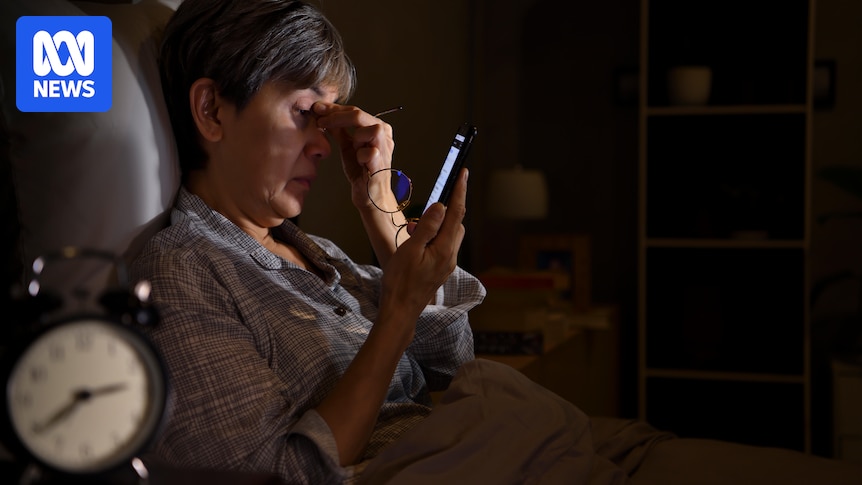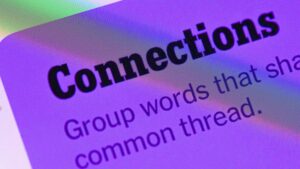
Before the COVID-19 pandemic, Jillian, a 68-year-old resident, consciously chose to live without internet access at home. Her decision wasn’t due to technical constraints but stemmed from a fear of what might happen if she succumbed to the internet’s allure. “I initially got onto the internet at the library to look up real estate because I was thinking of moving, and even then, I was aware that I seemed to linger on it,” she shared with ABC Radio National’s series Brain Rot.
The internet’s irresistible pull was enough to keep her browsing confined to the local library. However, when the pandemic hit in 2020 and lockdowns shuttered public spaces, Jillian decided to get Wi-Fi at home. It was then that she felt her internet use spiraled into something chronic. “I spent hours alone at home looking at my phone,” she recounted. “At the time, I called it ‘internet research,’ but it was just trivial news that was consuming me.”
Jillian’s struggle to limit her internet use reflects a broader issue many face today. Despite the absence of “internet addiction” in the Diagnostic and Statistical Manual of Mental Disorders, the behaviors associated with excessive internet use bear striking similarities to addiction. The medical community remains divided on whether it should be officially classified as a disorder.
The Rise of Internet Dependency
To understand the potential for internet addiction, it’s crucial to consider how deeply ingrained online activities have become in daily life. A decade ago, only about a third of the world’s population used the internet. Today, that figure has doubled, with the COVID-19 pandemic further accelerating this trend. A 2022 meta-analysis of 89 studies, involving over 200,000 participants, revealed significant increases in screen time during the pandemic.
“The increase was highest in primary school kids, whose screen time went up by 1.4 hours a day. Adult screen time increased by an hour each day compared to pre-pandemic use.”
While the long-term effects of this increased screen time remain uncertain, it raises questions about when internet use crosses the line into addiction.
Is Internet Addiction Real?
Anna Lembke, a psychiatrist specializing in addiction medicine at Stanford University, believes that internet addiction is possible. She explains that all addictions, whether substance-related or behavioral, involve the brain’s reward and motivation pathways. “Basically, when we do something rewarding or pleasurable, our brain releases dopamine in the reward pathway,” she notes. “The more dopamine that’s released and the faster it’s released, the more likely that substance or behavior is to be potentially addictive.”
Many digital platforms are designed to trigger these dopamine bursts, making them difficult to resist. “Most people who use digital media will not develop a severe addiction,” Lembke adds. “But a vulnerable subset will, and it’s likely similar to the 10 percent we see for addiction to drugs and alcohol.”
Despite the lack of an official diagnosis, Anastasia Hronis, a clinical psychologist at the University of Technology Sydney, agrees with Lembke. “It’s not yet a diagnosable condition, but evidence shows that children, teens, and adults can become hooked and experience harm as a result of excessive phone use,” she says.
Treatment Approaches and Global Efforts
While research into problematic internet use is still evolving, treatments often draw on principles used for other addictions. “The target of the addiction might change, but the fundamental principles around helping someone through an addiction are similar,” Dr. Hronis explains.
South Korea is considered a leader in addressing internet overuse. Since 2002, the country has operated “digital detox” camps, primarily for children and teenagers. These camps aim to increase human interaction by removing phones and reducing online time.
“Participants have their phones removed for the entire 12-day camp. The aim of the treatment is to increase human interaction and decrease periods spent online.”
In the United States, private treatment facilities like reSTART offer residential programs for those struggling with video game addiction and excessive screen time. Founded by psychologist Hilarie Cash, reSTART emphasizes total abstinence from screens and the internet during treatment.
Dr. Cash notes that clients often find the first month of treatment the most challenging. “The brain is going through a withdrawal process, but once it’s over, clients typically feel better, more relaxed, and start enjoying life again,” she says.
Finding Support and Moving Forward
As the pandemic waned, Jillian, who has been a member of Alcoholics Anonymous since her late 20s, recognized familiar feelings of addiction in her internet use. This led her to Internet and Technology Addicts Anonymous (ITAA), a support group modeled after Alcoholics Anonymous. ITAA provides a 12-step fellowship for individuals recovering from internet and technology addiction, with regular online support meetings.
“Thanks to ITAA, Jillian has been ‘sober’ from the internet for more than two years.”
While internet addiction remains an unofficial diagnosis, the experiences of individuals like Jillian highlight the need for continued research and support. As digital technology becomes increasingly integral to daily life, understanding and addressing its potential pitfalls will be crucial for mental health professionals and society at large.






